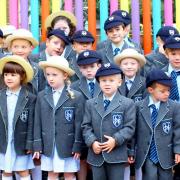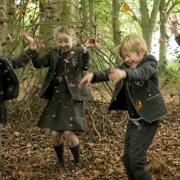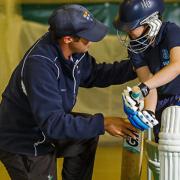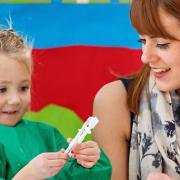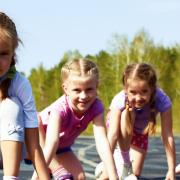From campfires and tree climbing to den building and insect spotting, the Forest School initiative is inspiring children
With technology playing an increasingly large role in children’s lives, many schools have introduced fun, creative and adventurous ways to get kids outside while learning important academic and life lessons.
The Forest School movement, inspired by Scandinavian early years education, has become increasingly popular in Norfolk. Many schools are now accredited Forest Schools, with specially trained staff and their own exciting designated outdoor areas, combining the national curriculum with hands-on learning in a woodland or natural environment.
At Taverham Hall School, near Norwich, pupils make the most of the 100 acres of woodland and River Wensum in the grounds with Forest School sessions.
“The Forest School ethos allows pupils freedom of choice, with sessions becoming progressively more child-led,” says headmaster Mike Crossley. “Pupils enjoy opportunities to develop through experiential learning, while taking responsibilities – extremely valuable skills in today’s risk-averse society. All pupils thrive in the outdoor environment, accessing activities at their own pace and taking the initiative to plan their experiences. Pupils have shown great responsibility in considering their own and others’ safety, and have developed practical, social and cognitive skills that will stay with them throughout their school career and later life.”
It is not necessary to have access to a huge area of outdoor space, many smaller schools are now official Forest Schools, with trained leaders creating a programme of activities to complement the national curriculum.
At Barford Primary School, near Wymondham, Forest School leader Tracey Denmark says there are so many ways that it aids learning in the classroom, linking in to science, PE, literacy and numeracy.
“It helps children challenge themselves with new activities, whether that is using saws to cut wood to create musical tapping sticks to use around the campfire, tying knots for bird feeders and bows and arrows or getting hands muddy during potion and pie making. That in turn helps make them more resilient and confident in the classroom.
“We also notice children gain physical confidence by assessing their own risk taking, such as climbing higher up a tree or using tools safely, and of course, Forest School also increases knowledge, awareness and responsibility for the outdoor environment.” w
www.forestschoolassociation.org
Forest schools
A growing number of schools are finding innovative ways to build outdoor learning into the curriculum - from pond dipping and gardening clubs to vegetable patches and insect hunting.
Glebe House School in Hunstanton has its own woodland for outdoor teaching, from nature studies and den building to learning bushcraft and survival skills
“Our children have a wonderful time exploring and enjoying outdoor pursuits,” says headmaster John Crofts. “I recall one child describing how a simple sausage cooked over a campfire was, ‘the best sausage I’ve ever tasted’.”
Town Close School in Norwich has outdoor classrooms and nature areas which it uses throughout the year.
Children are encouraged to explore the natural world and apply some of their numeracy and literacy skills in a more unusual, outdoor environment. Older pupils cook outdoors with portable stoves and a clay oven, which they built themselves.












